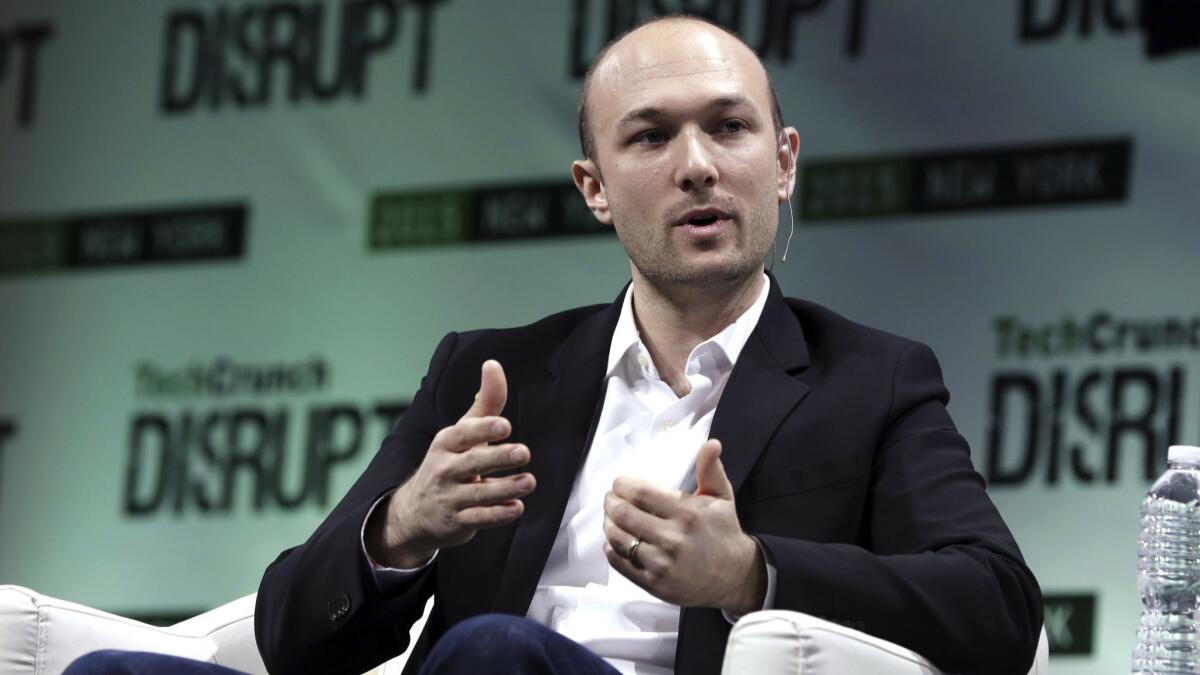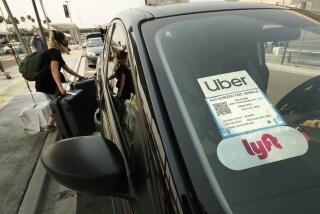Column: Lyft’s IPO disclosure shows it’s not close to profitability and has no good way to get there

Investing mavens who think of the big ride-sharing companies Uber and Lyft as the next big opportunities to get in on the ground floor of a fabulously profitable stock must have been downcast by Lyft’s financial report in advance of its pending initial public offering.
At least one would hope so. The IPO registration statement made public on Friday revealed something that smart followers of this supposedly disruptive new industry have known for years: Lyft is deeply, deeply in the red, and it has virtually no prospect of turning profitable any time soon, if ever.
In fact, its future resembles the old joke about a business that loses money on every sale, but hopes to make it up on volume. There’s no reason to expect Uber to look any different when it makes its own IPO disclosures, expected later this year. Uber is bigger than Lyft, but otherwise it’s in the same business.
Our mission ... Improve people’s lives with the world’s best transportation.
— Lyft IPO disclosure
“They’re a staggeringly unprofitable company,” says Hubert Horan, a transportation expert who long has been a critic of the Uber and Lyft investment pitch, “with nothing in the document that suggests how that could be fixed. I mean, nothing.”
The excitement generated by the pending IPOs of these two companies is fascinating because it seems to point to all the pitfalls of investing amid an unwarranted frenzy.
Lyft is expected to be valued at $20 billion to $25 billion after its IPO. Uber’s promoters have been talking about a valuation for that company of as much as $120 billion. These numbers would be extraordinary for a profitable company going public, but especially so for firms that have never turned a dime of profit.
What they do offer are stories, in which the global transportation system is about to be dramatically remade, with them as the beneficiaries of disruption. People will no longer own their own cars, but will rely on those of Uber and Lyft drivers to get them where they want to go.
Or not drivers, actually. In 2016, Lyft’s co-founder, John Zimmer, spun a fantasy on Medium in which driverless vehicles would account for the majority of Lyft rides within five years (i.e., 2021). For backup, he cited Tesla CEO Elon Musk, whose own ability to turn his own fantasies into reality lately has come into question.
Zimmer went on to assert that private car ownership would “all but end in major U.S. cities” by 2025. (Do you think that’s plausible? Me neither.)
Lyft still talks this way. In a section of its IPO statement entitled “Why Lyft Wins,” it says that “in the future, fleets of autonomous vehicles will unlock a new mode of transportation,” presumably with Lyft at the wheel.
Lyft fills in the gaps with airy claims to a higher purpose. “Our mission,” it states in its registration, is to “improve people’s lives with the world’s best transportation.” One would think its mission would be to make money, but since it doesn’t do that, it might as well lay claim to a goal no one can measure in dollars and cents.
What’s often left out of the narrative of world-changing innovation is that the pricing of Lyft and Uber rides is largely fictional. To the extent fares produce losses, those losses are eaten by the venture capital investors who have kept the companies afloat, to the tune of $24.2 billion for Uber and $4.9 billion for Lyft (according to Crunchbase).
But the companies are planning public offerings now because the venture investors are agitating for an exit door, by shifting the business risk from themselves to public equity investors.
Those investors, however, seldom are willing to donate alms to customers. That suggests that once Lyft and Uber go public, they’ll have to squeeze not only their drivers but their passengers for more money. Fares will rise, their competitive advantage over taxis or public transportation will shrink, and the fundamental economics of their business will change.
That brings us back to the here-and-now, in which Lyft’s business consists of bringing together passengers with drivers via a smartphone app. The drivers aren’t considered employees, but “independent contractors” who are responsible for their own gas, insurance, and wear and tear on their cars. Like Uber, Lyft establishes fares, sometimes unilaterally offering passengers discounts, and collects a commission on each trip.
In financial terms, the result is ugly.
In 2018, Lyft lost $911.3 million on $2.16 billion in revenue, which was its share of the $8.05 billion in “bookings” — that is, fares — collected by its drivers. The previous year, Lyft lost $696.1 million on revenue of $1.06 billion, its share of about $4.5 billion in bookings. That’s an improvement, in a sense: Lyft’s revenue more than doubled but its loss increased by only 32%.
But it doesn’t betoken a path to profitability, in part because the improvement reflected an intensified squeeze on drivers. As Horan calculates, the drivers’ share of bookings fell to 73% in 2018 from 77% the year before—and from 82% in 2016. By his reckoning, if the drivers had only retained their 2016 share of bookings, they would have collected an aggregate of $941 million more by 2018. Instead, that money flowed to Lyft’s bottom line, reducing its losses.
That suggests that “there will be very little potential to use even deeper driver pay cuts to improve unit economics going forward,” Horan argues — there’s only so much it can wring out of its drivers.
A couple of other items in the Lyft IPO statement should give investors pause. One is the supermajority control that will vest in the hands of its co-founders, Logan Green, 35, its CEO, and John Zimmer, 34, its president. Neither has ever run a profitable public company, but the IPO will grant them shares with 20 votes each, while members of the public get shares with only one vote apiece.
That means that Green and Zimmer will be able to “significantly influence any action requiring the approval of our stockholders” even as minority shareholders themselves. To put it another way, these two thirtysomethings will have no incentive to listen to anything that might fall into the category of constructive criticism.
These supermajority arrangements cementing founders in place have been popular among tech companies such as Lyft. But they’ve acquired a foul odor recently, due in part to the experience of Snap, the app company run by a couple of twentysomethings with unassailable authority. Snap, which has been chasing its own tail lately, closed at $24.48 on its IPO day in March 2017; on Wednesday it closed at a princely $9.87.
Then there’s Facebook, where founder Mark Zuckerberg is similarly ensconced with impregnable control, and has been using it in recent years to drive the company’s reputation for trustworthiness into a ditch.
Green and Zimmer each received salaries of $288,654 and stock awards valued at $41.7 million in 2017. The registration statement says Green received $400,000 in salary but no further stock award in 2018; it doesn’t mention Zimmer for technical reasons, but his compensation is thought to be the same for 2018.
Green received $935,105 last year for “personal security services,” which has produced some raised eyebrows among securities analysts who can’t imagine what would warrant such an expenditure. (It isn’t clear whether Zimmer got a similar outlay.) Lyft wouldn’t discuss the security spending on the record.
None of this means that Lyft might not have a successful IPO, defined as luring enough investors into the pool to make a splash at a multibillion-dollar valuation. If that happens, Uber is likely to do even better.
But it’s inescapable that the ardor for these companies is based on their stories more than any hint of financial promise. “The one thing these companies are good at is manufacturing narratives,” Horan says.
If Lyft fails to make good on the prospect of limitless growth and profits — as it acknowledges might happen — buyers into the IPO may well wonder why they bought. But if they’ve read the Lyft registration statement, at least they won’t be able to say they weren’t warned.
Keep up to date with Michael Hiltzik. Follow @hiltzikm on Twitter, see his Facebook page, or email michael.hiltzik@latimes.com.
Return to Michael Hiltzik’s blog.







